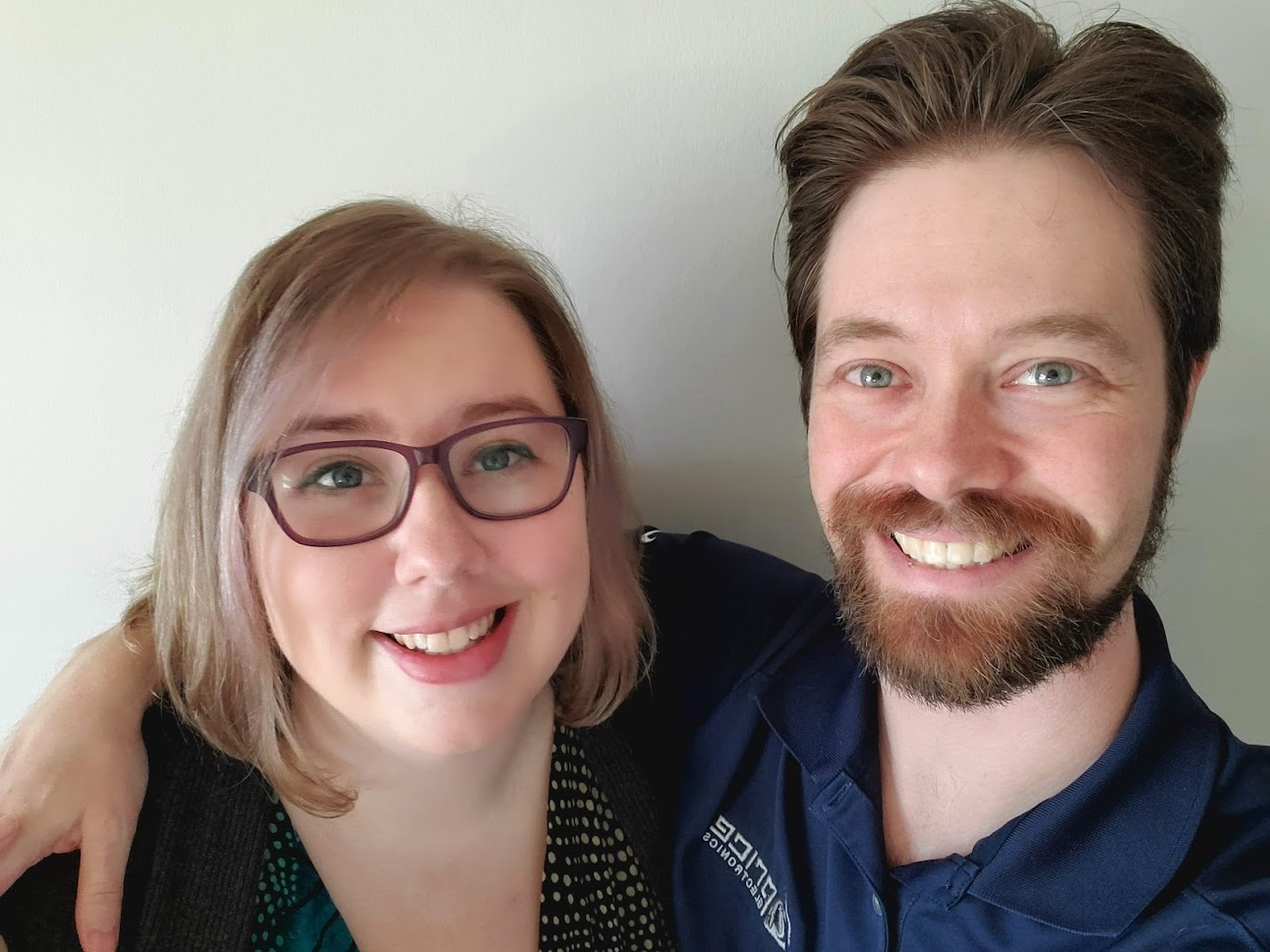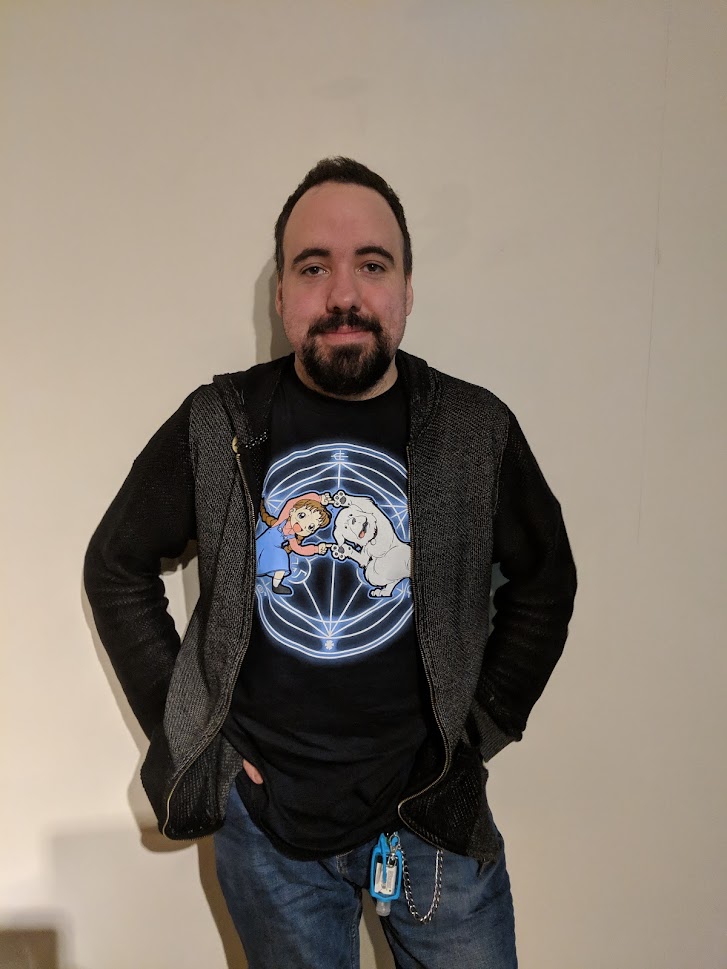We are Craig and Leah.

Craig’s close friend Dylan was having some health issues that finally became severe enough to cause trouble walking, and a friend insisted he go to the hospital after seeing him walk during a lunch date. After emergency surgery to drain a buildup of excess cerebrospinal fluid, the medical team also noticed a growth sitting on his brain stem, which was initially thought to be a benign tumour.

A few weeks after his surgery, Dylan was no longer in a state to be living independently. Craig only had a one-bedroom condo but offered Dylan a temporary bed in the middle of the living room so Craig could assist with basic care and providing meals. At this point, even though we had very limited space to offer, we worked together to plan out the space in such a way that it could still be used as a small living room while also allowing Dylan to have some furniture such as a proper bed with storage and a computer desk. We enjoyed our time together as friends, removed from ‘cancer’ talk.
We began accompanying Dylan to his now regularly scheduled appointments at CancerCare. After the initial radiation and chemotherapy treatment, Dylan had now received the maximum amount of radiation that was deemed safe for a lifetime. He then transitioned to appointments with his new, regular care team at CancerCare which consisted of Dr. Pitz, his dedicated nurse Sonnu, and consistent administrative team.
Through advances in cancer research, Dr. Pitz informed Dylan that he actually had a genetically distinct type of diffuse midline glioma called an h3K27M mutation. The treatment allowed Dylan to take his chemo at home and for the most part, he didn’t experience too many side effects. While he did feel tired during the chemo days, which was jokingly referred to as “his time of the month”, he was able to bounce back within a day or two and the side effects were usually only mild. He was still able to enjoy a high quality of life despite being on chemo.
By the time Dylan reached the 16-month mark since his diagnosis, the upper end of his original prognosis, the tumour was actually quite small on the images and it was thought to be mostly scar tissue. At this point, we began making plans for how many months of positive results would mean that it was time for Dylan to finally get his own place. Craig began charging a very modest rent from Dylan, and for the next three months was secretly putting it into an account with the intention to return the money as a “congratulations on beating cancer” housewarming present, when we were able to finally celebrate Dylan moving into the next phase of his life and getting his own apartment or condo.
The first MRI post-chemotherapy came back looking positive. However, a few months later the next scan showed that Dylan had developed two new brain tumours in new locations. Because of the regular monitoring by CancerCare the new tumours were caught very early, and there was real hope that a new round of chemotherapy would be able to take care of them.
The chemo once again made Dylan tired and he returned to part time work. However, this time, Dylan experienced brain swelling, believed to be a side effect of the chemotherapy and had trouble walking, short term memory issues and simple tasks became difficult.

During an appointment, Dylan was offered some new treatment options but Dr. Pitz let the group know the end was near and it was time to consider the palliative care program for treatment to improve quality of life. While we aren’t certain if it was the shock of the news, Dylan’s memory loss issues, or both, Dylan didn’t seem to understand what was going on. We later overheard him on the phone with his employer saying he was trying a new treatment and hoped to be back at work in a few weeks. It was the hardest conversation we ever had in our entire lives when we had to sit down with Dylan to tell him that he was going to die, and that he wouldn’t ever be going back to work. Dylan finally processed the news, and he broke down and said he wasn’t ready to die. He still had so many things he wanted to do. The next few weeks were hard.
After many falls and near misses, Dylan was transferred to the palliative care program. While he was mostly unable to speak or move easily, he could still eat and one of Dylan’s favourite things to do in palliative care was to use the call button to ask for ice cream as many times as he wanted. He was mostly non-responsive and unable to move within about two weeks of entering palliative care and died within a month.
While it is heartbreaking that Dylan passed away at 36 years old, he had access to the best possible treatment options and we are grateful. We could call Dylan’s team at CancerCare with a direct number and would get a call back from Dr. Pitz or Sonnu within just a few hours. The staff knew Dylan and loved to joke with him, and because of the expert care he received, Dylan was able to enjoy 24 months after his diagnosis surrounded by friends and family, with most of that time being high quality with few side effects.
We are incredibly grateful for the care and support Dylan received from everyone at CancerCare Manitoba. The advancements in research and work of his oncology team allowed Dylan to live well beyond his initial prognosis. They gave him, and us, more time.

